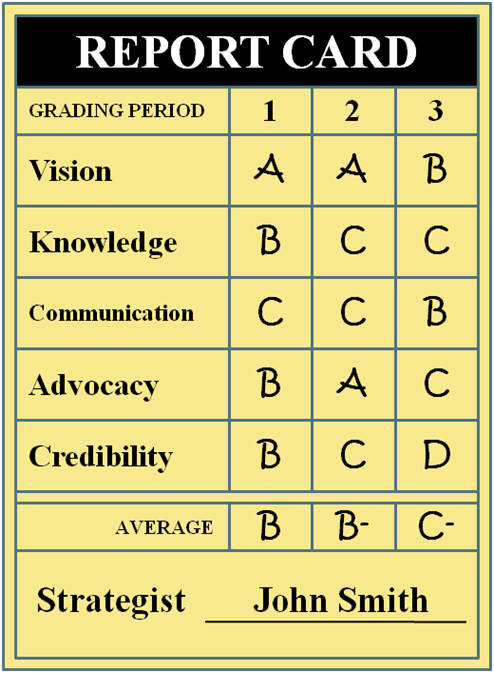I was thinking about cooking and strategy today. An odd pair of topics I know but they actually have a lot in common. Let me explain.
Even if you are not a chef by training, you know some things about cooking.
- First, you probably know that a lot of people cook but not many are masters. For instance, I count as cooking almost any time that I intentionally apply heat to raw food. There is not much nuance or sophistication to my definition (and you would rightly deduce that I am not a master chef). You probably wouldn’t want to eat many of the things that I have prepared but I can do some basic things well. Meanwhile, a master chef brings training, creativity and versatility to the kitchen.
- Second, cooking usually involves multiple ingredients. A proficient cook understand the purpose of each ingredient, when to add them and how much to add. Maybe they have a recipe to start with but they trust their judgment as the dish is being prepared. A little more salt, a little less butter they might decide along the way. A novice either ignores the recipe (and creates disasters) or slavishly adheres to a set of directions with no understanding of when or how to creatively deviate from the prescription.
- Third, and this is getting much more involved, a master cook understands that a meal is far more than the mixture of ingredients according to some recipe. Indeed, a meal includes the presentation of the food, the drink to accompany the meal, an artful display on the table and maybe some music for enjoyment. The “full meal” to the master is an encompassing sensory experience that is meant to satisfy those that partake. (A novice wonders why paper plates aren’t good enough for most meals.)
Strategy is similar to cooking.
- Almost anyone can claim to be a strategist for basic topics but not many are masters.
- Master strategists understand fundamentals and tools but know when to apply their intuition and experience to improve on both.
- An accomplished strategist provides a complete strategy which provides value at many levels to the organization.
Separate the “microwave strategists” from the master practitioners.
If you are in management, a primary task that you have is to distinguish between titles and capabilities. The title of “strategist” means little when you need to know if they can handle difficult assignments. Of course a microwave strategist (think of someone that handles simple assignments quickly) might be quite helpful for certain business topics (there are many “popcorn” topics in everyday business). However, they are not nearly as suitable for complex business strategy, competitive intelligence or early warning systems that make a difference to the company. In these cases, you have to look for the right kind of thinking (e.g. clear, integrative), specialized training and creativity in someone that has a strategic mindset. Everyone can be a type of strategist but only a few are suited for the complicated subjects of business.
Fundamentals first and then the important deviations.
The famous football coach of the Green Bay Packers, Vince Lombardi, said that football was “nothing more than blocking and tackling.” His point was that the fundamentals, consistently and effectively applied made the most difference in the outcome of a game. It’s worthwhile pointing out that his teams would have failed miserably if he really stopped with the fundamentals. They needed to have offensive and defensive plays that gave his team advantages. A strategist, like Coach Lombardi or any master chef, must know what is basic to the craft. However, the breakthrough value often comes from the intuitive leaps that signal a departure from the norm. In strategy work, this places a premium on the strategist’s ability to gather clues from the environment (much like a chef tastes the food as it is being prepared) to determine how to make adjustments to the basic tools. How do others understand the tools? How should an approach be customized for the various strategy audiences? When is it time to introduce or adapt a competitive model? These process deviations (or customizations) make the difference between simply completing a task and making an impactful change to the business.
The total strategy experience matters.
A confession is in order at this point. Many times in my career it seemed like the end point of a strategy effort was a gorgeous PowerPoint presentation impressively delivered to management. That’s it, I’m done I regularly exclaimed after some high level presentation. I was wrong.
When done effectively, strategy work engages the organization on many levels. First, it helps define a direction. Second, it signals how others will be involved in that direction. Third, it suggests steps along the way to the destination. Fourth, it may well include the external impacts on partners, suppliers and customers. Fifth, it equips the organization with the proper tools to implement and measure the strategy. Sixth, it includes new or refined definitions that become part of the lexicon. (See my blog entry “Grading Your Business Strategist” for more information.)
I can become a better cook (my family hopes this happens sooner rather than later). Maybe I can even earn the title of “chef” if I dedicate myself to learning and applying the craft. Until then, the kind of meals that I can reliably prepare will be the basic ones.
Your strategists may be of the microwave variety. They can handle what is simple and quick. Where they need help is in the “full meal” experience. See my complete set of articles at http://tomhawes.wordpress.com for many ideas about how to move them forward in their competencies.
Bon Appétit

